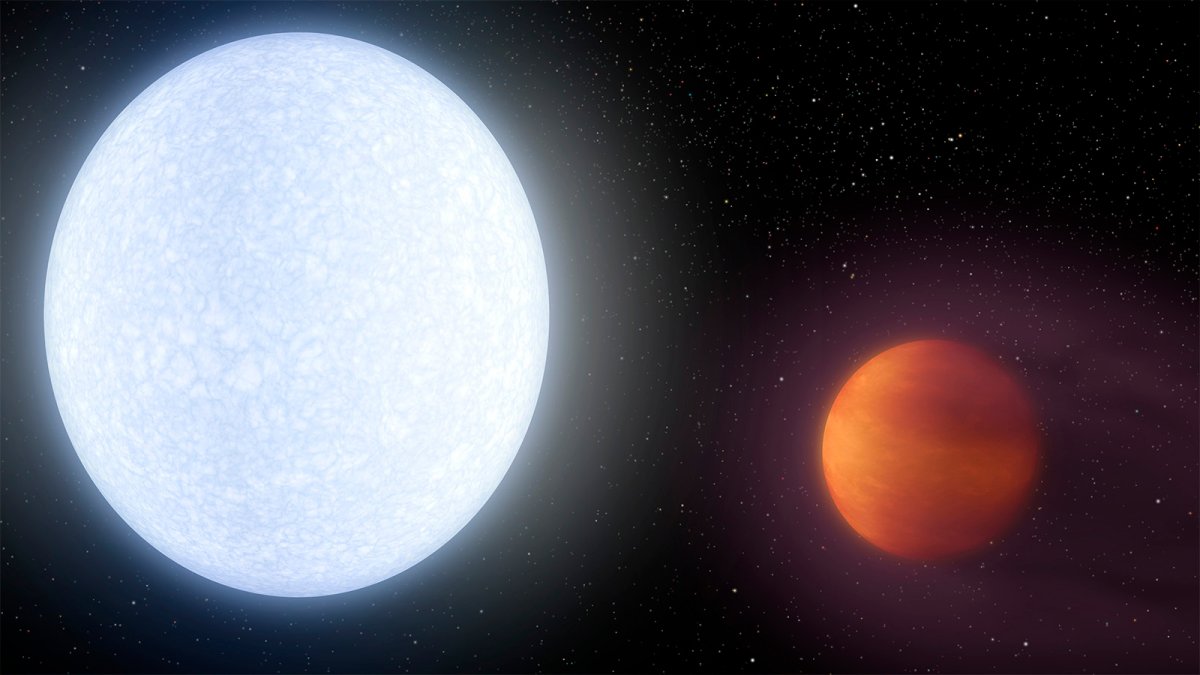You couldn’t get much further from the ideal vacation spot than KELT-9b.

The Jupiter-like planet, studied by a NASA-linked team at Ohio State University and unveiled to the public earlier this week, is nearly as hot as the surface of our sun.
In fact, it’s the hottest giant planet discovered by humans so far.
KELT-9b is orbiting a blue A-type star about 650 light-years from Earth and has a stunning surface temperature of around 4,300 C, making it hotter than many stars.
Even if the planet were rocky and cool enough to sustain life, however, there’s still the problem of radiation. The gas giant’s parent star is much bigger and hotter than our own sun, and the planet orbits it so tightly — about once every day and a half — that the planet is probably “evaporating” as it whips through its orbit.
Scientists believe KELT-9b is actually leaving a comet-like trail of blown-off materials in its wake.
“(The star) will swell to become a red giant star in a few hundred million years,” Keivan Stassun, a professor of physics and astronomy at Vanderbilt University, who co-directed the study, said in a NASA release.
At that point, if the planet hasn’t been evaporated into nothing, it will likely just be swallowed whole by its star.
“The long-term prospects for life, or real estate for that matter, on KELT-9b are not looking good,” Stassun said.
WATCH: NASA’s Cassini flies inside Saturn’s rings and sends back images

The planet is also locked into its parent star, meaning one side is always facing toward the light and one side is in perpetual darkness. Scientists still aren’t sure what’s happening on the dark side.
“Molecules may be able to form there, but probably only temporarily,” NASA’s release noted.
Studying extremely unlivable planets like KELT-9b may seem pointless, but it can help astronomers understand how star systems form, grow old over hundreds of millennia and then eventually go dark.
READ MORE: NASA announces ‘giant accelerated leap’ forward in search for another Earth
Over the next few years, humanity may get a better look at the distant world through NASA’s Spitzer and Hubble space telescopes, and eventually the James Webb Space Telescope, which is scheduled to launch in 2018.
“Observations with Hubble would enable (astronomers) to see if the planet really does have a cometary tail, and allow them to determine how much longer that planet will survive its current hellish condition,” NASA explained.
It’s been a busy year so far for planetary discoveries. In February, NASA announced the discovery of a system of seven rocky planets orbiting a star about 40 light-years away. It was described as a giant leap forward in the search for an Earth-like world that could sustain life.


Comments